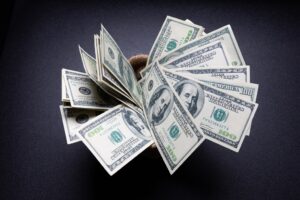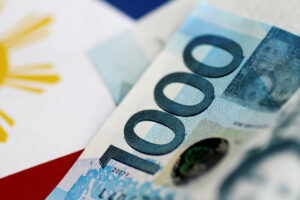MORE SHORT-TERM foreign investments flowed into the Philippines in August, data from the Bangko Sentral ng Pilipinas (BSP) showed.
Transactions on foreign investments registered with the central bank through authorized banks posted a net inflow of $533.95 million, surging by 248% from the $153.46-million inflow posted a year ago.
Month on month, inflows fell by 61.4% from $1.38 billion in July.
These foreign portfolio investments are also called “hot money” due to the ease by which these funds enter and leave the economy.
BSP data showed gross inflows stood at $1.37 billion in August, down by 4.9% from $1.44 billion a year ago.
During the month, investment inflows came mostly from Singapore, the United States, United Kingdom, Luxembourg and Malaysia. These five economies accounted for 81.5% of foreign portfolio investment inflows.
A little over half (51.2%) of these investments went into Philippine Stock Exchange-listed securities of banks; transportation services; holding firms; property; and food, beverage and tobacco. The rest (48.8%) were invested in peso government securities.
Meanwhile, gross outflows of hot money declined by 35% to $836.78 million in August from $1.29 billion a year earlier.
“The US remains to be the top destination of outflows, receiving $436.33 million (or 52.1%) of total outward remittances.”
In the January-August period, BSP-registered foreign investments yielded a net inflow of $1.998 billion, surging by 542.9% from the $310.77 billion net inflows a year ago.
Gross net inflows stood at $11 billion, while net outflows amounted to $9 billion in the eight-month period.
Rizal Commercial Banking Corp. Chief Economist Michael L. Ricafort said the higher net inflow of hot money was largely due to the BSP’s recent policy rate cut.
The Monetary Board in August reduced borrowing costs by 25 basis points (bps), bringing the key rate to 6.25% from the over 17-year high of 6.5%. This was its first policy reduction in nearly four years.
“The Fed also started to cut rates by a jumbo (50 bps) on Sept. 18 to a new target range of 4.75%-5% that could be matched locally later this year,” Mr. Ricafort added.
US Federal Reserve Chairman Jerome H. Powell on Monday struck a hawkish tone on the economy, saying the central bank is not “in a hurry to cut rates quickly.”
Mr. Powell said he also sees two more rate cuts, totaling 50 bps, this year “if the economy performs as expected.”
John Paolo R. Rivera, a senior research fellow at the Philippine Institute for Development Studies (PIDS), said the continued inflows of short-term capital were due to the improving business environment.
“It might be explained by improving investor confidence brought about by lagged effects of liberalization measures, completion of some infrastructure projects, fiscal consolidation, robust macroeconomic fundamentals, economic outlook due to managed inflation and lowering of interest rates, and the trajectory of the Philippines towards upper middle-income status,” he said.
“However, this is threatened by political risks and the electoral season where a slowdown is expected due to emphasis on campaign activities,” he added.
For the coming months, more short-term investments could enter the country after the BSP slashed the reserve requirement ratio (RRR) for banks.
“The RRR cuts would increase banks’ loanable funds by about P400 billion with reduced intermediation costs and borrowing costs, thereby would help increase the demand for loans that, in turn, would boost economic growth and investment valuations,” Mr. Ricafort said.
The BSP last month said that it would reduce the RRR for universal and commercial banks and nonbank financial institutions with quasi-banking functions by 250 bps. This would bring the ratio to 7% from 9.5%, effective later this month.
It will also cut the RRR for digital banks by 200 bps to 4%, while the ratio for thrift lenders will be reduced by 100 bps to 1%. Rural and cooperative banks’ RRR will likewise go down by 100 bps to 0%.
The BSP expects foreign portfolio investments to yield a net inflow of $4.2 billion in 2024. — Luisa Maria Jacinta C. Jocson






